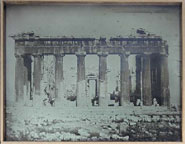Strengths & Weaknesses
Anyway, there are stong defenders of both. Some of them proclaim that film photography is dying, that is going to be replaced by digital, this is fed by news about the big companys, like Canon, informing that they are going to stop selling film photography products. Others, proclaim that digital photography can't be considered as a fine art, so it will never be a substitute of film photography.
To continue with the last post, now I'll introduce this text, that I hope you'll find usefull to understand a little bit more about how both types of photography work, so you'll be able to take your own conclusions about this subject, considering that we are still in a comprehensive and learning state.
The disadvantages of digital photography are directly related to limits in technology. To have a high quality image, you have to have an extremely large amount of 1's and 0's. The limiting factor is the plate that translates the light into digits. In first generation digital technology, the plates were not very good at digitizing the light, and so digital photographs taken with these plates look fuzzy and "squarey." In the past few years, however, technology has advanced so that the plates are much more effective at digitizing light, and pictures can be taken at much higher qualities.
The resolution of an image taken by traditional means is limited by the film it is taken on and the lens that focuses the light. Some film is better than others, and some lenses are better than others. While mild enlarging and cropping of a film photograph can be done in the darkroom without much loss of resolution, the sharpness and clarity of the image decreases as the image is enlarged and less of the surface area of the film is being used to create the photographic print. This does not refer to the effects of "zooming in" with a tele-photo lens, which vary greatly depending on the lens and can be just as sharp as any other kind of photo. Because the whole surface of the film is still being used when one uses a tele-photo lens the quality of the image will be equal to an image captured on the same film with any other lens of equal quality.
The resolution of a digital image is limited to the quality of the plate and to the quality of the lens in the same way that a film photograph is limited by the film and the lens. A higher quality plate records more information (measured in pixels or Megapixels), in the same way that a lower ISO film is able to record a higher resolution image.
In the same way that a film photograph loses sharpness and clarity when it is enlarged, digital images that are later cropped either to alter the composition or "zoom in" decrease in quality as the resolution decreases and noise becomes more apparent. Lower-quality digital images are notorious, however, for losing quality much more rapidly than a film photograph.



